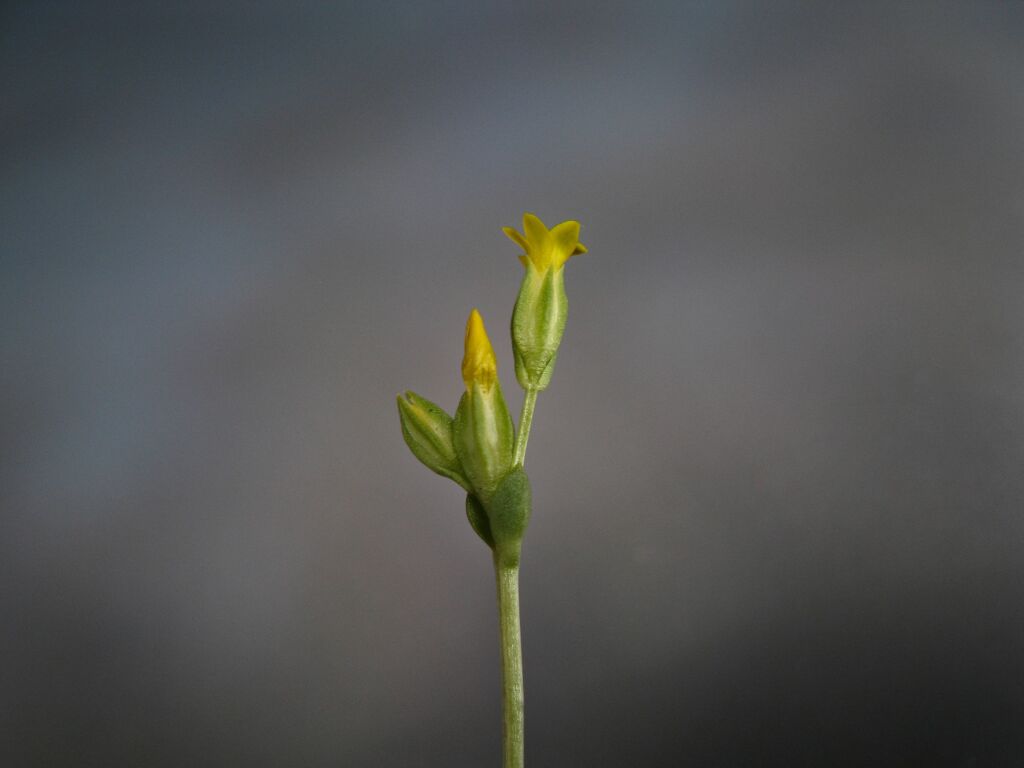Sebaea ovata
(Labill.) R.Br. Yellow SebaeaErect herb, 5–30 cm high; stem usually simple below inflorescence. Leaves broadly ovate, 3–12 mm long, 2–10 mm wide. Flowers in sparse to mid-dense cymes; bracts leaf-like or narrower; pedicels 1–3(–8) mm long (or the uppermost flowers sessile). Flowers 5-partite; calyx 4–5 mm long, lobes lanceolate, acute, margins broadly membranous; corolla lemon-yellow, tube sub-equal to the calyx, membranous, slightly constricted above ovary, lobes ovate, 1.5–3 mm long; stamens subequal to corolla-tube; style c. 0.5 mm long, stigmas c. 0.7 mm long. Capsule ovoid, subequal to calyx; seeds c. cuboid or obloid, truncate, c. 0.3 mm long, narrowly ridged or winged. Flowers Oct.–Dec.
LoM, MuM, Wim, GleP, Brid, VVP, VRiv, GipP, OtP, WaP, Gold, CVU, GGr, DunT, NIS, EGL, EGU, WPro, HSF, HNF, OtR, Strz, MonT, VAlp. Also WA, SA, Qld, NSW, ACT, Tas. New Zealand. Widespread but rarely abundant across southern and central Victoria, with disjunct occurrences in and near Wyperfeld National Park. Occurs mostly in light forest, usually on seasonally wet, sandy or gravelly soils, but also in drier, recently burnt sites.
Walsh, N.G. (1999). Gentianaceae. In: Walsh, N.G.; Entwisle, T.J., Flora of Victoria Vol. 4, Cornaceae to Asteraceae, pp. 310–321. Inkata Press, Melbourne.
 Spinning
Spinning




